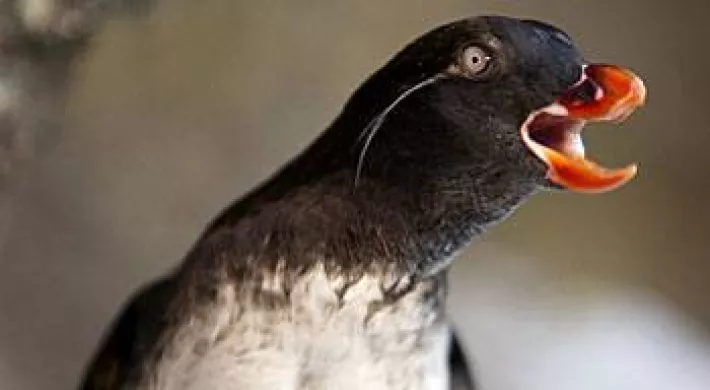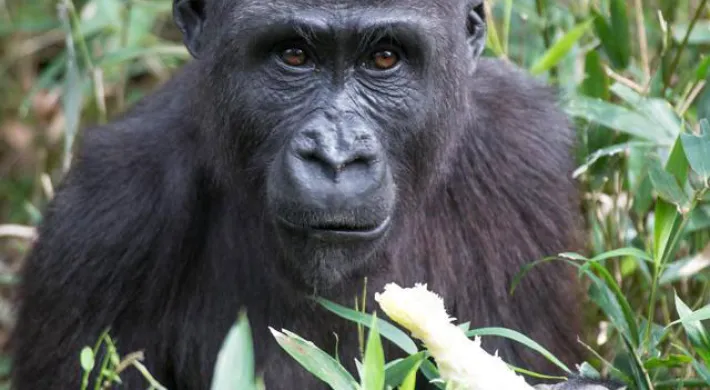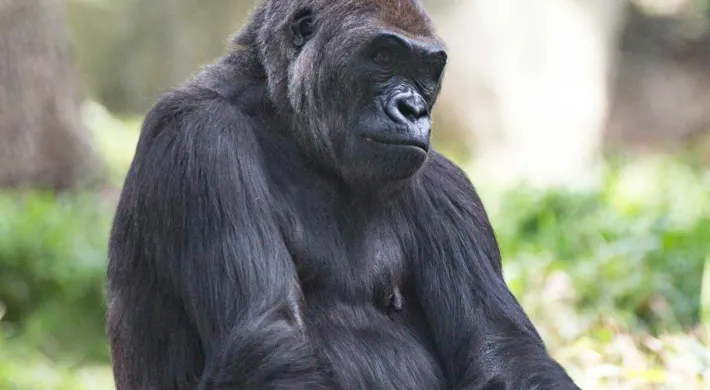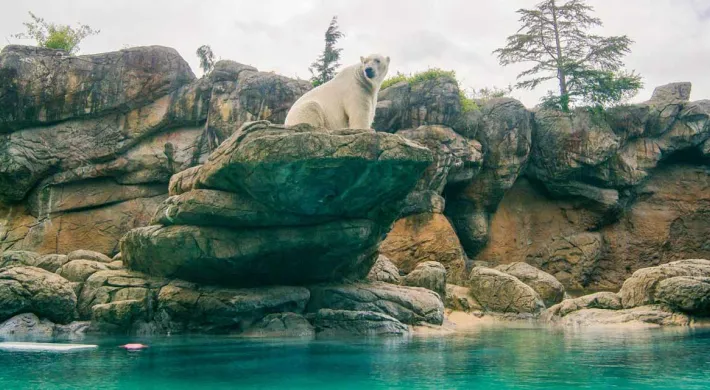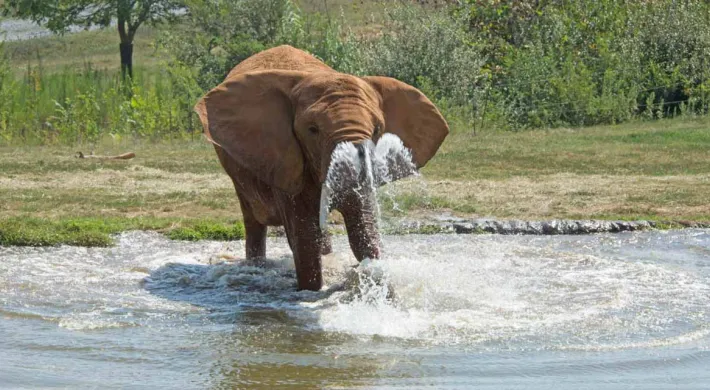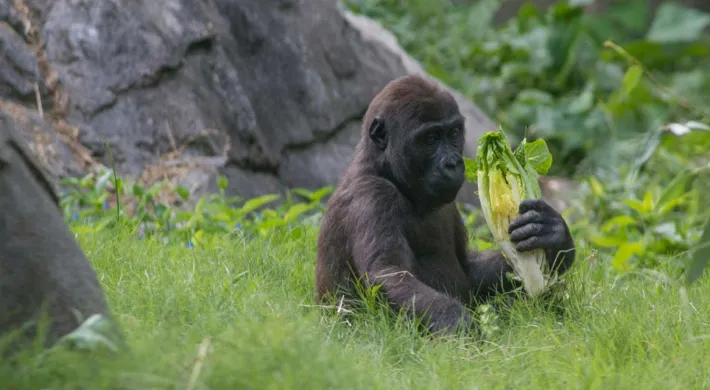Written by Emily Lynch, Associate Curator of Research, North Carolina Zoo
Zoo’s are great fun to visit: you can see animals that you may never see in the wild, watch how they move, hear how they sound, and maybe even smell their smell.
Beyond this level of public engagement, zoos play a critical role to the advancement of the wildlife sciences. For some species, effective studies on wild populations can be challenging, if not impossible. Housing these animals within a zoo allows for more comprehensive study, and this improved understanding can make significant contributions to wildlife management programs.
Here at the North Carolina Zoo, while we are dedicated to improving our own management practices through research, it is an additional benefit if we can use these findings to advance wildlife sciences.

Picture 1: One of the Zoo's horned puffins standing on a cliff's edge
A good example of this comes from work done with our sea birds. The Zoo houses three types of sea birds: horned puffins (picture 1), thick-billed murres (picture 2), and parakeet auklets (picture 3). In the wild, these three species breed on rocky coasts during summer months, but spend the winter on the ocean waters, far out of sight of land, which greatly hinders consistent scientific observation. Therefore, zoo housed species offer a unique opportunity to observe and understand the behavior of these birds, year-round.
North Carolina State University student, Abby Register, recognized this opportunity and devised a scientific study to improve our understanding of these sea birds, as well as enhance our care methods. As little is known about the behavior of their wild counterparts during non-breeding season, Abby created a 7 month project, where she recorded the behaviors and activity budget of our zoo-housed sea birds to improve our understanding of their behaviors across all seasons.
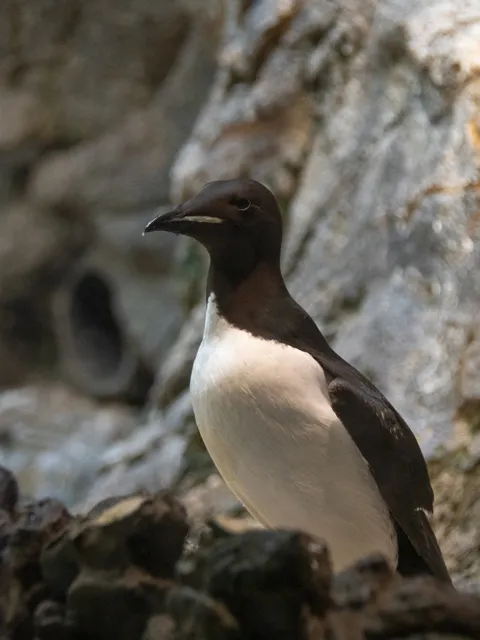
Picture 2: A thick-billed murre among the rocks of the sea bird habitat
In addition, Abby measured the birds’ behavioral responses to different enrichment items. As discussed in my previous blogs, enrichment items (resources that encourage behaviors that are often seen in the wild or that create a stimulus to challenge and engage an animal) are often included in our habitats to promote the psychological and physical wellbeing of the animals. Abby wanted to observe how the birds interact with these items to help fine tune enrichment strategies. Specifically, Abby recorded how the birds engaged with four items: a climbing bridge, a mirror, a sprinkler, and kelp attached to a log.
Following her study, Abby came to two important conclusions. First, while the bird’s behavior during breeding season closely mimicked those of their wild counterparts (i.e. engaged in more stationary and low energy activities), she found very different movements post-breeding season: all birds moved down from their high cliff terrain to the ground and the water. This corroborates activity patterns seen in wild populations, where birds will focus on foraging in the water and decrease time spent moving and traveling after they leave their nests.
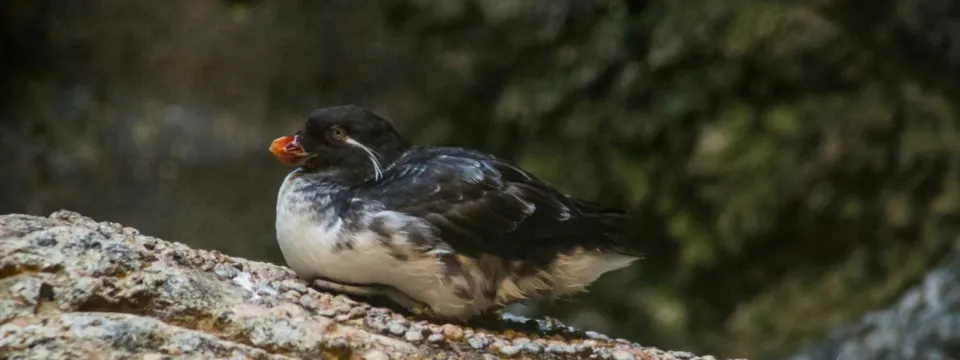
Pictured Above: Picture 3: An auklet resting on a rock
In addition, the enrichment tools were most used by the horned puffins. In particular, the kelp log and mirror items were the most successful at increasing desired behaviors, such as foraging and active engagement.
Abby’s study was therefore able to improve our general understanding of these birds’ behaviors, as well as management protocols for the Zoo’s animals. Kelp logs and mirrors could be used when staff felt the Horned puffins needed to be encouraged to express desirable behaviors and other enrichment items were fine tuned to grab the attention of the other two species. Her study also contributed to a larger body of science, documenting post-breeding season behaviors in these sea birds.
This project is just one of many research endeavors hosted by our Zoo that advance wildlife science and enhance animal care methods. When we “sea” the science, the animal’s benefit!

